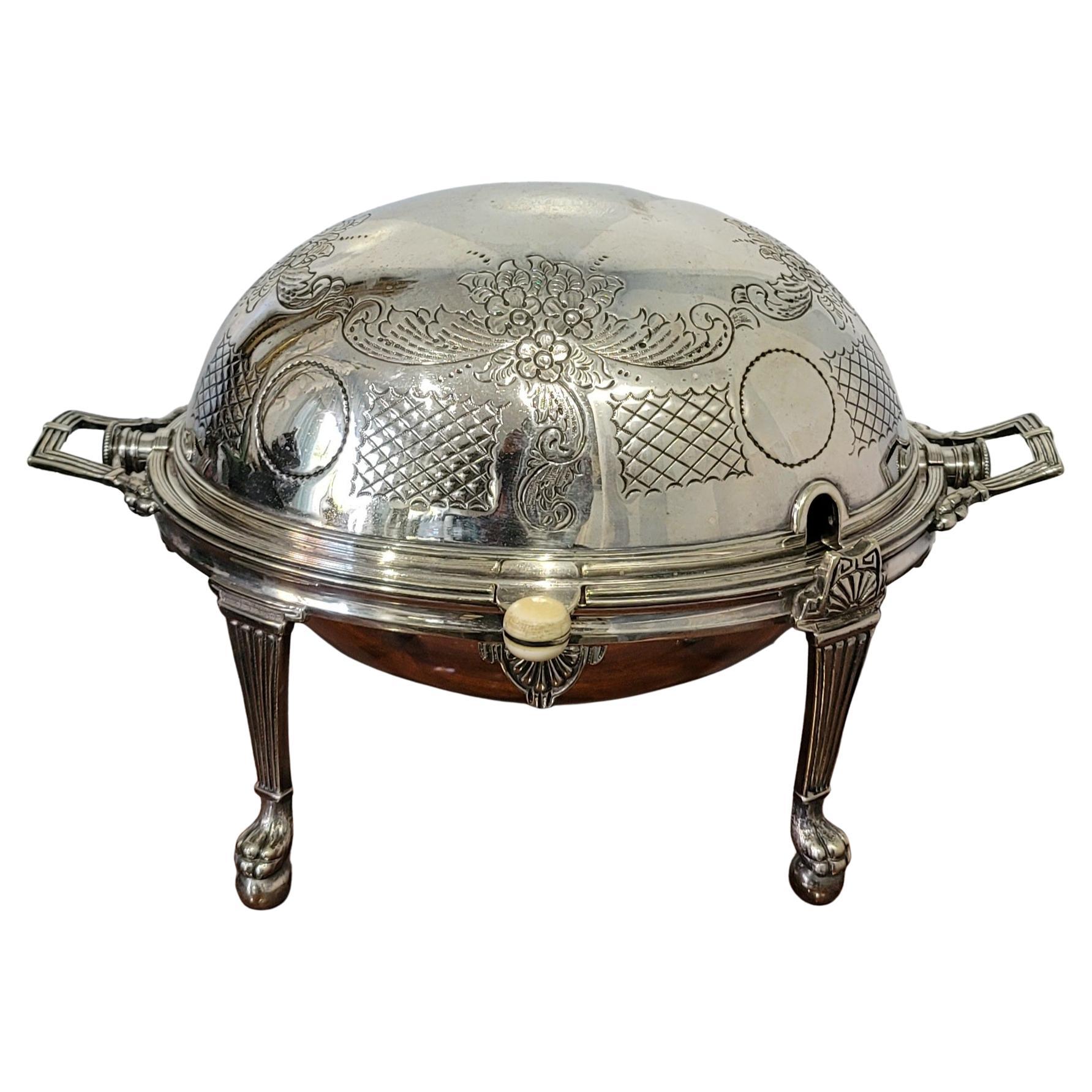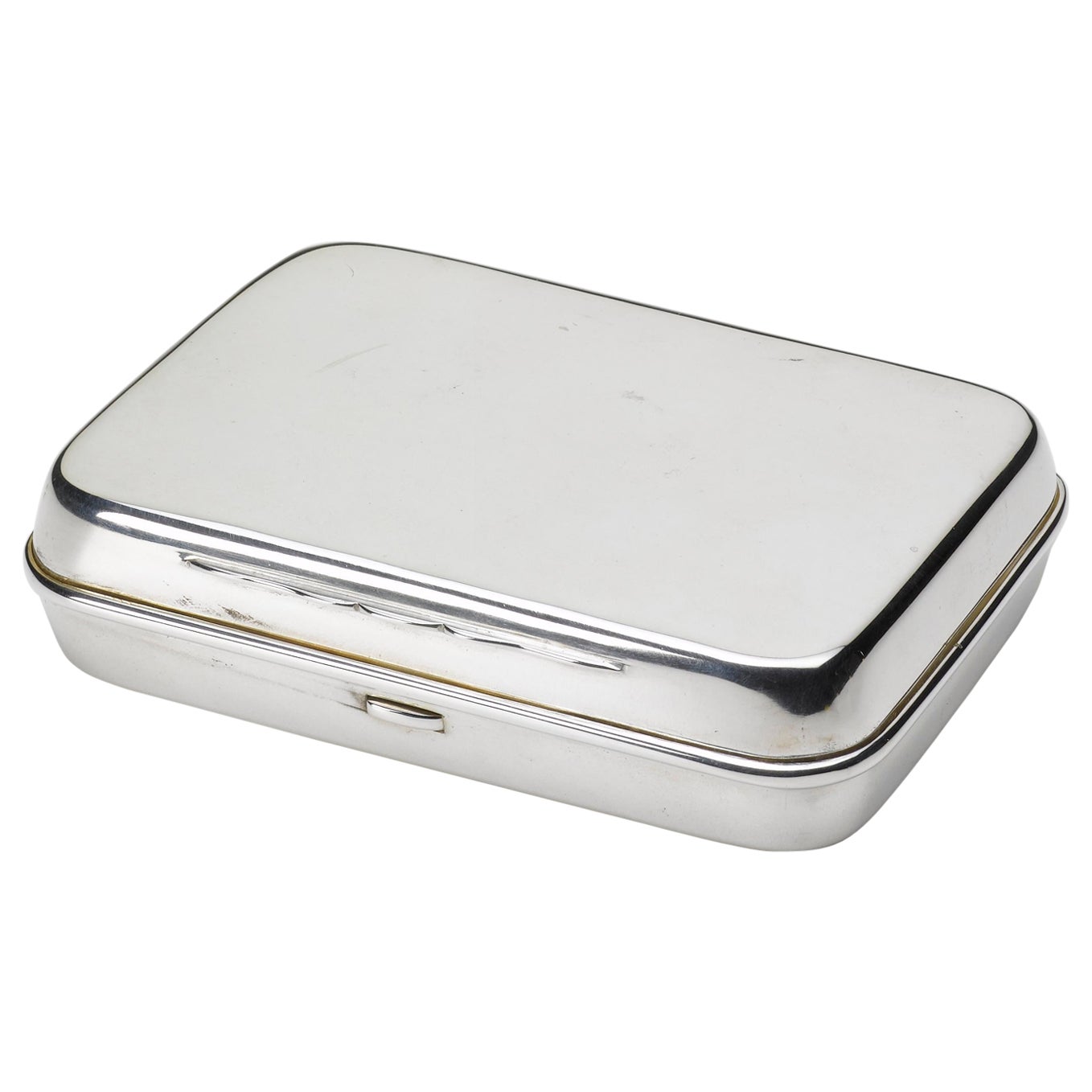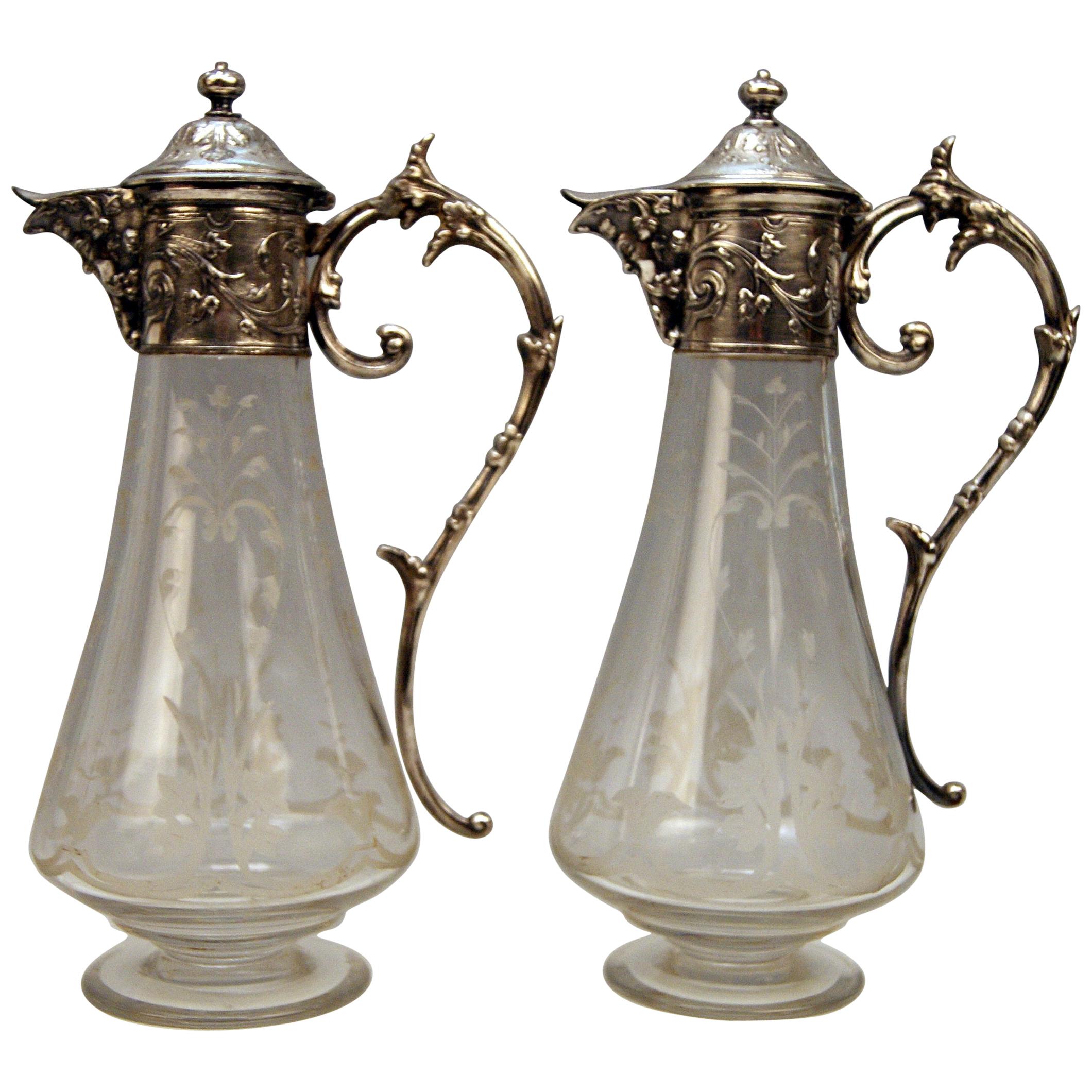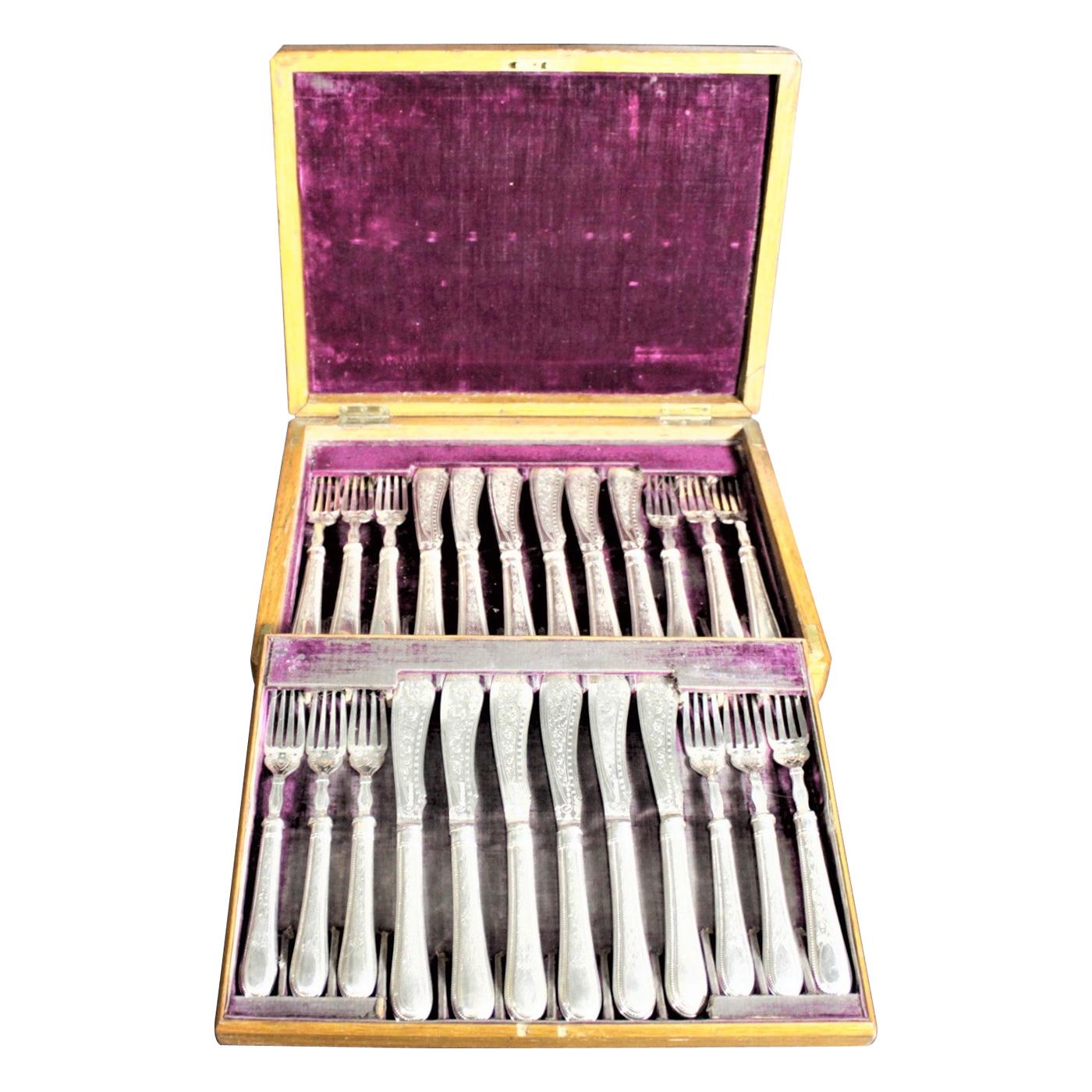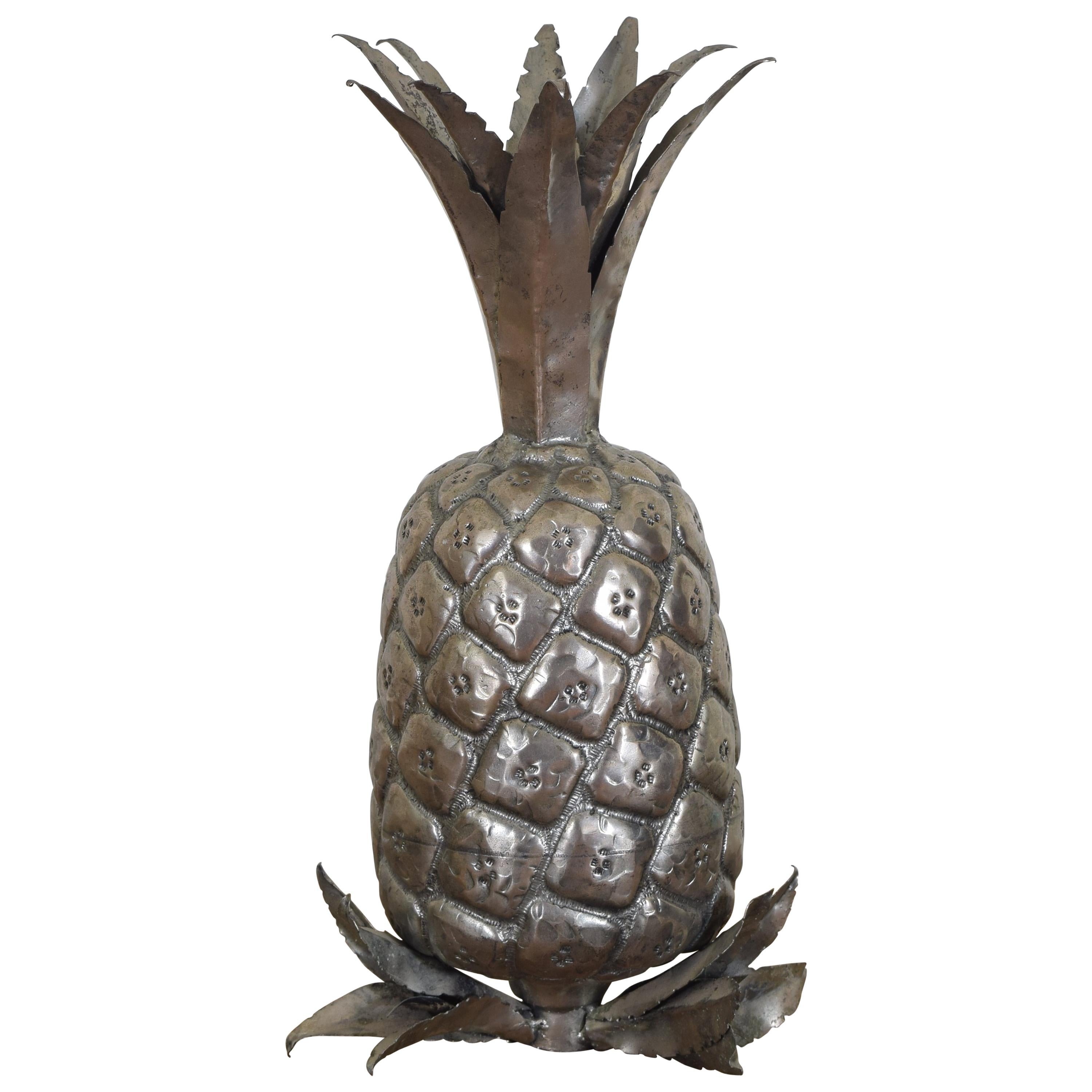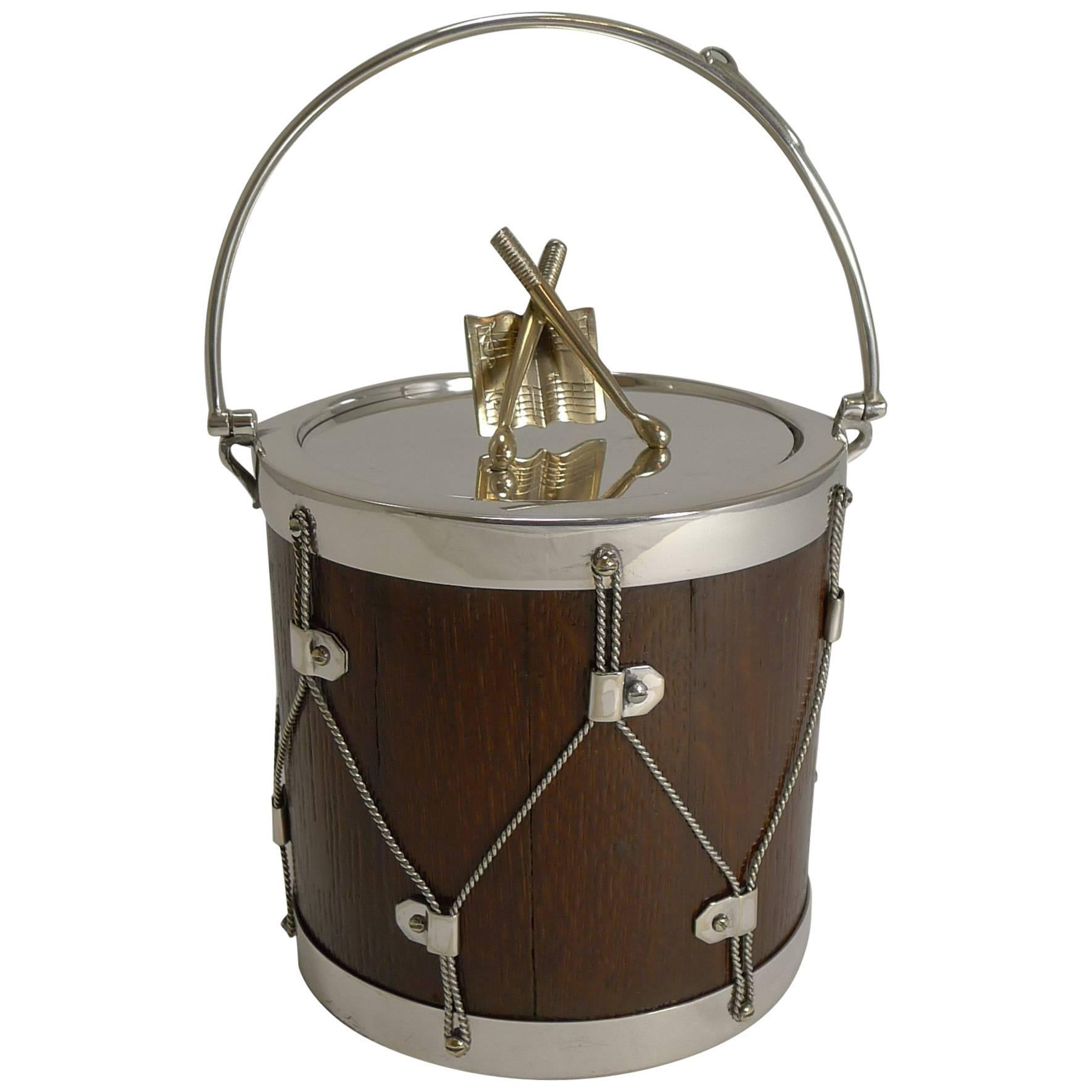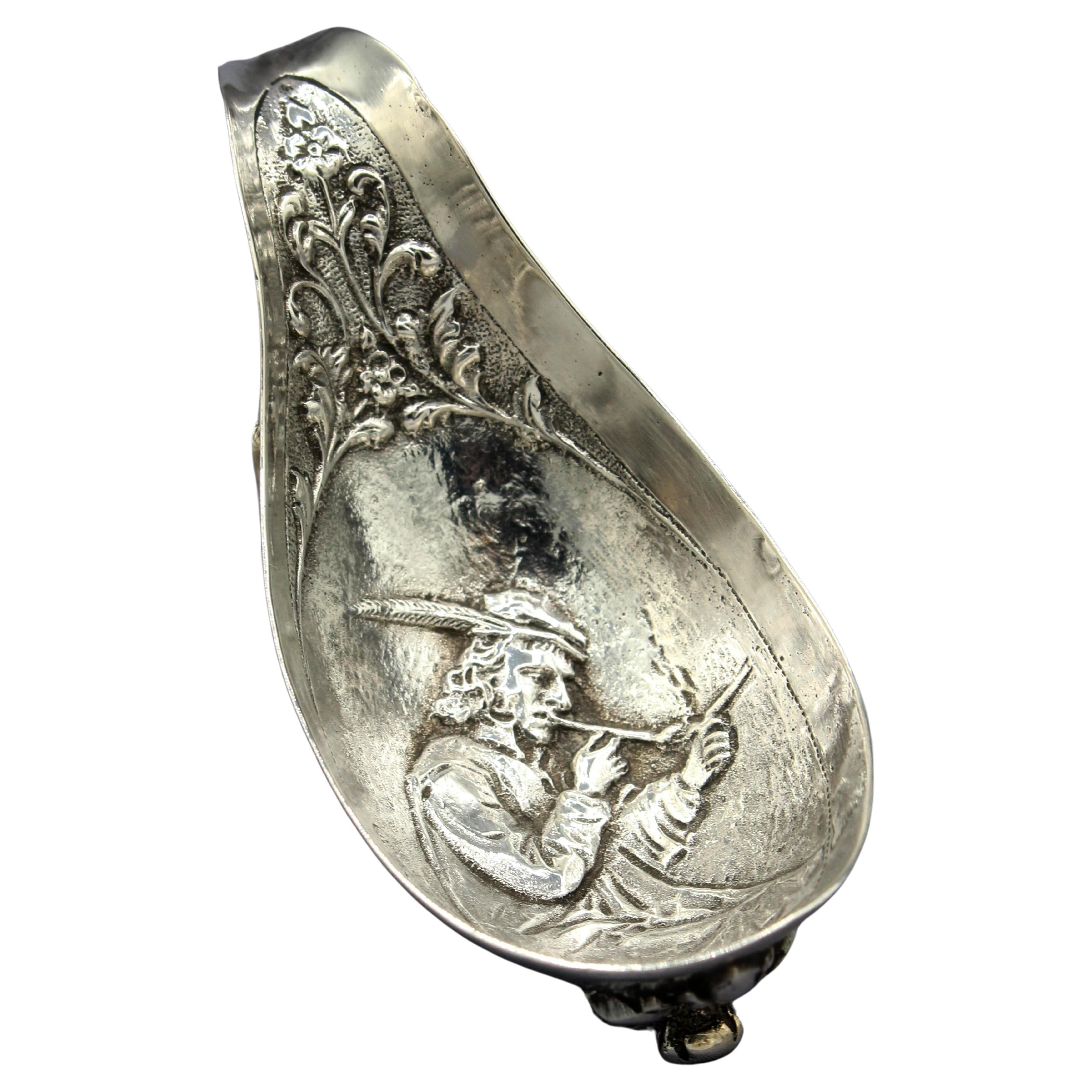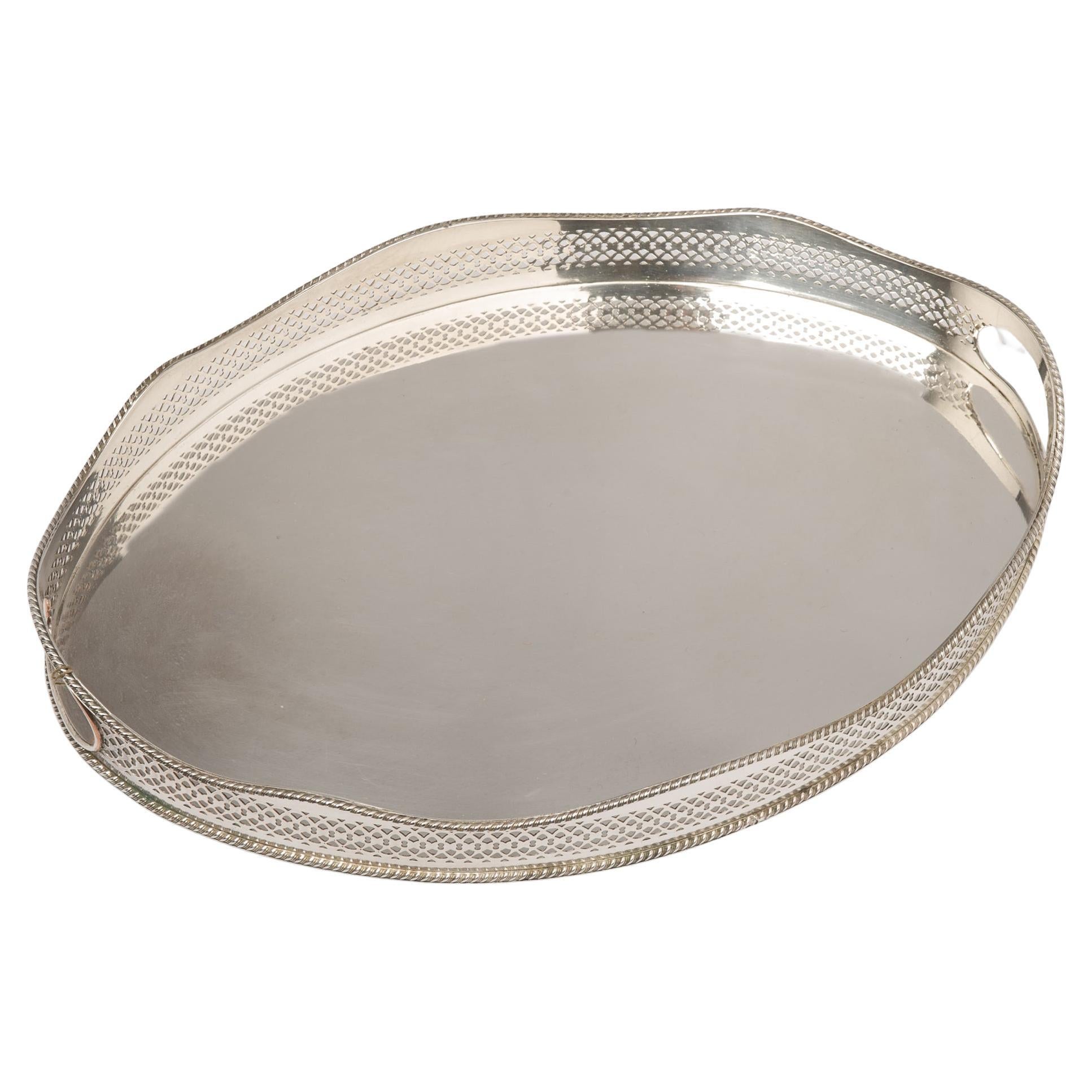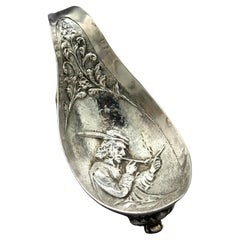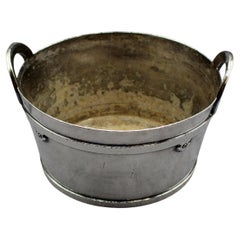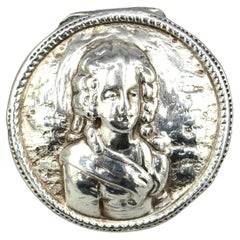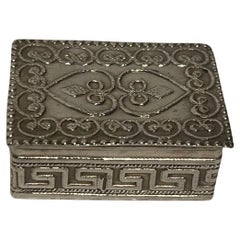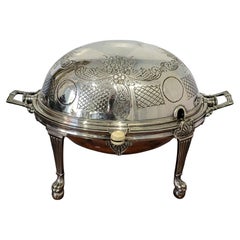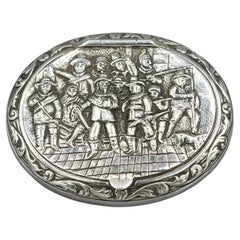
Continental Silver Oval Pill Box, Netherlands, c.1900
View Similar Items
Want more images or videos?
Request additional images or videos from the seller
1 of 7
Continental Silver Oval Pill Box, Netherlands, c.1900
About the Item
- Dimensions:Height: 0.38 in (9.66 mm)Width: 1.75 in (4.45 cm)Depth: 2.13 in (5.42 cm)
- Style:Late Victorian (Of the Period)
- Materials and Techniques:
- Place of Origin:
- Period:1900-1909
- Date of Manufacture:1900
- Condition:Wear consistent with age and use. Condition commensurate with age and use.
- Seller Location:Chapel Hill, NC
- Reference Number:Seller: WSI-9476z1stDibs: LU6458236678732
About the Seller
4.9
Platinum Seller
These expertly vetted sellers are 1stDibs' most experienced sellers and are rated highest by our customers.
Established in 1930
1stDibs seller since 2022
149 sales on 1stDibs
Typical response time: 1 hour
More From This SellerView All
- Continental Late 19th Century 800 Silver Pipe RestLocated in Chapel Hill, NCContinental late 19th century 800 silver pipe rest. Displaying repousse design of a man in Renaissance garb with his pipe, trailing flowers & cast scroll feet. 0.90 troy oz. 28 grams...Category
Antique Late 19th Century English Renaissance Revival Sheffield and Silv...
MaterialsSilver
- c. 1900-20 Arts & Crafts Wine Bottle Coaster by WilcoxBy Wilcox Silver Plate Co.Located in Chapel Hill, NCCirca 1900-1920 bucket form wine bottle coaster by Wilcox. Arts & Crafts design; double handled; hammered bindings. Engraved: ESK Jr. Wear on top of one handle. Also could be used as...Category
Early 20th Century American Arts and Crafts Sheffield and Silverplate
MaterialsSilver Plate
- Continental Sterling Silver "Patch Box", Late 19th CenturyLocated in Chapel Hill, NCContinental sterling silver "Patch Box", late 19th century. Foreign import marks. Sterling standard 925 mark. Vermeil interior. The 18th century female head is charming & appropriate...Category
Antique Late 19th Century European Late Victorian Sterling Silver
MaterialsSterling Silver
- c. 1880-1920 Pair of Silver & Silver on Copper Picture FramesLocated in Chapel Hill, NCPair of silver & silver on copper small picture frames with easel stands, Finnish, c.1880-1920. Arts & Crafts, hand made. The corner bosses are cast solid silver. Pivot pins replaced...Category
Antique Late 19th Century Finnish Arts and Crafts Sheffield and Silverplate
MaterialsSilver Plate, Copper
- c. 1920 Electroplated Nickel Silver Salver by S.B. & Co.Located in Chapel Hill, NCElectroplated salver, circa 1920, made in London by S.B. & Co. Electroplated nickle silver marks. Marked Made in England. Fine condition - the border design repeated in the vine & gr...Category
Early 20th Century English Art Nouveau Sheffield and Silverplate
MaterialsNickel
- Mid-20th Century English Silver Plated Champagne CoolerLocated in Chapel Hill, NCMid-20th century English silver plated champagne cooler. Classical design with bold acanthus motif handles & repetitive motif borders. Provenance: Councill family of furniture making...Category
Mid-20th Century American Classical Greek Sheffield and Silverplate
MaterialsSilver Plate
You May Also Like
- Sterling Silver Pill Box with Detailed MotifLocated in Savannah, GASterling silver pill box. Marked 925Category
Early 20th Century Sheffield and Silverplate
MaterialsSterling Silver
- 1890s Drew & Sons Revolving Electroplate Silver Oval Serving DishLocated in Germantown, MDKeep your food warm when serving your guests. This lovely serving dish and warmer has a very ornate cover that rolls back.. It was made by Drew & Sons, England. The warmer is dated to the later part of the 19th Century. It is made in electroplated silver...Category
Antique Late 19th Century English Late Victorian Sheffield and Silverplate
MaterialsSilver Plate
$1,406 Sale Price25% Off - Hallmarked Silver Plated Keepsake Box, Sheffield, Uk, Circa 1900Located in Colorado Springs, COOffered is a stunning Sheffield silver keepsake box dating to 1900, with associated hallmark. This small box includes a clean interior and rounded corners. The box is free of names or initials, but would have been used to house keepsakes such as jewelry or cufflinks. A well maintained, elegant piece, this antique silver box is an excellent addition to any silver collection. Trinket or keepsake boxes have taken on many forms since their first conception in ancient times. However their purpose remains the same; to store jewelry and other items precious to the owner. Originally, these boxes were used specifically for jewelry. These were in common use as early as 5000 BC in Ancient Egypt, when the majority of Egyptians, both male and female, wore jewelry. Boxes were used to keep these gemstone encrusted items safe. In Ancient Rome, jewelry was a status symbol. Rings and brooches were utilized to represent ones status in society. Again, boxes were needed for security and storage purposes. Finding early examples of these are quite rare. Victorian and Edwardian examples of trinket boxes are far more common. This is because owning jewellery was a luxury until the Victorian era- let alone possessing so much a box was needed to store it all. Fine jewelry and other items became available to the masses after the industrial revolution due to the reduction in production costs. This led to a demand for trinket boxes, which were much smaller than jewelry boxes and therefore better suited to the needs of the middle class who did not yet possess an abundance of jewelry. In Victorian households, collectables and other items of interested were also stashed inside these boxes. This is why they are known as trinket or keepsake boxes, rather than just jewelry boxes, although of course jewelry was also stored in them. Trinket boxes were produced in large numbers around this time. Many were lined with colored plush or velvet or rich wood. More elaborate designs had interior divisions and trays for rings and other pieces of jewellery. It was also common to see trinket boxes so small that they could only contain one item, such as a single ring. Ornate exteriors were created to reflect the value of the trinket boxes contents. The Edwardian era saw the introduction of new styles of trinket box. These included small circular or oblong boxes...Category
Antique Early 1900s British Art Deco Decorative Boxes
MaterialsSilver
- Hallmarked Silver Plated Keepsake Box, Sheffield, UK, circa 1900Located in Colorado Springs, COOffered is a stunning silver plated keepsake box dating to 1900, with associated hallmark. This small box includes a wooden interior with two slots and a blank square on top where initials could have been engraved. A well maintained, elegant piece, this antique silver box is an excellent addition to any silver or home decor collection. Trinket or keepsake boxes have taken on many forms since their first conception in ancient times. However their purpose remains the same; to store jewelry and other items precious to the owner. Originally, these boxes were used specifically for jewelry. These were in common use as early as 5000 BC in Ancient Egypt, when the majority of Egyptians, both male and female, wore jewelry. Boxes were used to keep these gemstone encrusted items safe. In Ancient Rome, jewelry was a status symbol. Rings and brooches were utilized to represent ones status in society. Again, boxes were needed for security and storage purposes. Finding early examples of these are quite rare. Victorian and Edwardian examples of trinket boxes are far more common. This is because owning jewellery was a luxury until the Victorian era- let alone possessing so much a box was needed to store it all. Fine jewelry and other items became available to the masses after the industrial revolution due to the reduction in production costs. This led to a demand for trinket boxes, which were much smaller than jewelry boxes and therefore better suited to the needs of the middle class who did not yet possess an abundance of jewelry. In Victorian households, collectables and other items of interested were also stashed inside these boxes. This is why they are known as trinket or keepsake boxes, rather than just jewelry boxes, although of course jewelry was also stored in them. Trinket boxes were produced in large numbers around this time. Many were lined with colored plush or velvet or rich wood. More elaborate designs had interior divisions and trays for rings and other pieces of jewellery. It was also common to see trinket boxes so small that they could only contain one item, such as a single ring. Ornate exteriors were created to reflect the value of the trinket boxes contents. The Edwardian era saw the introduction of new styles of trinket box. These included small circular or oblong boxes...Category
Antique Early 1900s English Art Deco Decorative Boxes
MaterialsSilver
$600 Sale Price20% Off - Antique English Oak and Silver Plate Biscuit Box by John Grinsell & SonsBy John Grinsell & SonsLocated in Bath, GBA handsome and very stylish biscuit box dating to circa 1890 by the top notch silversmith, John Grinsell & Sons of Sheffield. Made from solid English oak, the box is fitted with e...Category
Antique Late 19th Century English Late Victorian Decorative Boxes
MaterialsSilver Plate
- WMF Art Nouveau Pair of Claret and Water Jugs Silver Plated, Germany, circa 1900By WMF Württembergische MetallwarenfabrikLocated in Vienna, ATWMF Art Nouveau pair of claret and water jugs (pitchers) / silver plated (Germany). Manufactory: WMF Germany Geislingen Dating: Made circa 1900 Material: Metalware, Britannia Me...Category
Antique 1890s German Late Victorian Sheffield and Silverplate
MaterialsSilver Plate
Recently Viewed
View AllMore Ways To Browse
England Silverplate
James Dixon Pewter
Sheffield Reproduction Serving Tray
Silver Plated Warming Servers
Silverplate Chafing Dish
Tiffany And Co Ep
Tiffany And Co Sheffield
Vintage Leather Canteen
Andr� Mare On Sale
Antique Old Sheffield Plate Regency Wine Cooler
Antique Silver Sugar Scuttle
Christofle Egg
Christofle Wine Coasters
Cornish Ware
Mappin And Webb Silver Plated Cutlery
Meriden B Company Silverplate
Oneida Hotel Plate Vintage
Sheffield Meat Tray

